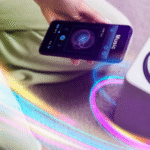In today’s world of instant access and digital creativity, the phrase “YouTube to MP3” has become synonymous with convenience and personalization. Millions of users turn to YouTube every day for music, lectures, podcasts, and motivational talks, often wishing they could carry that audio offline. The ability to convert YouTube videos into MP3 format provides exactly that freedom — to listen, share, and learn without the need for continuous internet access. However, many users remain uncertain about the legality, safety, and ethical considerations surrounding this process. This comprehensive guide explores the concept of YouTube to MP3 in full detail, from its technical process and legitimate uses to the risks and modern alternatives that protect user privacy and support creators.
At its core, a YouTube to MP3 converter extracts the audio portion from a YouTube video and converts it into the MP3 format — one of the most widely supported audio file types in existence. This simple-sounding process is backed by complex data extraction, transcoding, and compression technologies that ensure high-quality playback while minimizing file size. But understanding how it works is only part of the picture. The real question for users is: how can they use it responsibly, legally, and safely? As digital content laws evolve, so too do the ways in which users can access media while respecting creators’ rights.
Understanding the Concept of YouTube to MP3
YouTube to MP3 conversion essentially separates video and audio streams. When you paste a video link into a converter, the system fetches the video’s data, decodes the multimedia content, and extracts the audio track. The extracted sound is then encoded into MP3 format — a method that uses perceptual coding to remove inaudible parts of the sound and compress it efficiently. MP3 files can then be played on nearly any device, from smartphones to smart cars, which is why they remain universally popular even in the age of streaming services.
For casual users, this process seems instantaneous, but under the surface, several layers of algorithms handle bitrate optimization, sample rate conversion, and even background noise adjustment. The higher the bitrate, the better the sound quality — though that also increases file size. Typically, converters allow users to choose between bitrates like 128kbps, 192kbps, or 320kbps. Understanding these choices is vital for ensuring the right balance between quality and storage efficiency.
The Legal Landscape Around YouTube to MP3
“Is YouTube to MP3 legal?” is one of the most frequently asked questions surrounding this topic. The answer lies in how the conversion is used. Downloading and converting a video that you do not own or have permission to use may violate YouTube’s Terms of Service. However, converting royalty-free or Creative Commons-licensed videos, or those you have created yourself, is entirely legal. Educational institutions, journalists, and podcasters often rely on this for fair-use purposes such as commentary, critique, and academic research.
Legal concerns also extend to copyright law, which protects the rights of creators and distributors. In the United States and many other countries, using copyrighted material without authorization can result in legal consequences. Therefore, understanding where your source content comes from is essential. “Respecting intellectual property is not just about rules; it’s about recognizing the work behind creativity,” says media lawyer Catherine Holt, emphasizing how ethical practices maintain the digital ecosystem.
Why People Convert YouTube to MP3
Despite the presence of streaming services like Spotify or Apple Music, users still turn to YouTube for unique or rare content — old recordings, speeches, remixes, and educational talks not available elsewhere. The ability to convert and listen offline offers independence from data limits and connectivity issues. Students may convert lectures for revision, while music enthusiasts may create playlists of live performances unavailable on streaming platforms.
Moreover, MP3 files provide portability and versatility. They can be easily transferred, edited, or integrated into projects such as podcasts, presentations, or sound design. For content creators, this feature enables quicker workflows and broader accessibility. As one digital artist put it, “Sometimes, the right piece of audio can spark an entire creative project.”
Table 1: Comparison of Audio Conversion Bitrates
| Bitrate (kbps) | Quality Level | Typical Use Case | File Size (3-min song) |
|---|---|---|---|
| 128 kbps | Standard | Everyday listening | ~2.8 MB |
| 192 kbps | Medium | Better sound clarity | ~4.3 MB |
| 256 kbps | High | Music enthusiasts | ~5.6 MB |
| 320 kbps | Studio quality | Audiophiles, editing | ~7.2 MB |
This table highlights the trade-off between quality and storage — a consideration for users managing large audio collections.
The Role of Technology in YouTube to MP3 Tools
Modern converters rely on advanced technologies that streamline the extraction and encoding process. Unlike early software that required manual downloading, today’s cloud-based platforms operate entirely online, often with no installation required. They employ APIs, machine learning-based optimization, and content recognition systems to deliver faster and more accurate conversions. Some even integrate audio normalization, volume balancing, and metadata tagging automatically, ensuring that files are organized for playback on any device.
Additionally, browser extensions and mobile apps have made the process even more accessible. However, this convenience also introduces risks, especially when users rely on unverified platforms that may inject malware or steal personal data. Hence, cybersecurity awareness is key when using any digital media tool.
Privacy, Security, and Ethical Concerns
Downloading from untrustworthy sites can compromise your system’s safety. Some converter platforms are disguised as legitimate tools but may install adware or track user activity. To avoid this, users should rely on secure, HTTPS-based sites that do not request unnecessary permissions. Using a VPN can further protect identity and browsing data.
Beyond security, there’s also an ethical component. Converting copyrighted music without the artist’s permission undermines their revenue and creative rights. Ethical downloading — limited to personal, non-commercial use — respects the effort of creators and aligns with fair digital conduct. As author Daniel Reeves writes, “Technology should amplify creation, not erode it.”
Advantages of Using YouTube to MP3 Converters
The popularity of YouTube to MP3 tools lies in their flexibility. They support multiple formats (MP3, AAC, WAV) and allow users to download only the segments they need. Some tools enable direct integration with cloud storage or audio-editing software, making them a valuable asset for both casual users and professionals. The offline access they provide is particularly useful for travelers or people in low-connectivity regions, ensuring that information and entertainment remain available anytime.
Table 2: Comparison of Safe YouTube to MP3 Practices
| Practice | Safe | Risky | Recommendation |
|---|---|---|---|
| Using official or verified converters | ✓ | Always prefer verified platforms | |
| Downloading copyrighted music | ✓ | Avoid without permission | |
| Using a VPN during conversion | ✓ | Increases privacy | |
| Providing personal details to converter | ✓ | Never required | |
| Installing unknown software | ✓ | Use browser-based tools |
This table underlines the small but significant steps that ensure both safety and legality during conversions.
The Changing Future of Audio Conversion
As YouTube evolves, its algorithm increasingly emphasizes content protection and monetization. This means converters must adapt to new encryption formats, requiring continuous technical updates. Cloud-based artificial intelligence is expected to enhance the quality of MP3 outputs, enabling automatic removal of background noise or volume inconsistencies. Meanwhile, ethical streaming alternatives that allow licensed offline listening, such as YouTube Premium, continue to grow in popularity.
Interestingly, new blockchain-based content systems aim to solve copyright challenges by linking ownership metadata directly to audio files. This could make illegal conversions far less practical in the future, protecting creators’ rights while still enabling fair access for educational or archival use.
Cultural Impact of YouTube to MP3
Music has always been shaped by technology, from vinyl to cassettes to streaming. The YouTube to MP3 trend continues this legacy of democratizing access to sound. It allows global audiences to share and experience culture beyond borders, language, or platform restrictions. However, this democratization also raises questions about how society values creative labor in an age of effortless duplication.
For many, converting YouTube to MP3 isn’t about piracy but preservation — saving old songs, interviews, or speeches that might otherwise disappear. As media historian Laura King observed, “Digital conversion isn’t theft when it becomes cultural preservation.” Still, balancing accessibility and fairness remains the challenge of the decade.
User Experience and Interface Design
Modern YouTube to MP3 platforms have refined their interfaces for speed and simplicity. A clean, ad-free layout with visible download options increases user trust. Features like drag-and-drop video links, customizable audio quality, and progress tracking enhance usability. Many services now integrate multilingual support and cross-device synchronization to accommodate international audiences. These developments show that the YouTube to MP3 ecosystem has matured into a sophisticated user-oriented industry.
Environmental and Data Considerations
Though digital downloads seem harmless, they contribute to energy consumption through data transfer and storage. Servers running online converters consume electricity, and mass downloading increases network load. Users can minimize environmental impact by keeping only essential files and choosing lower bitrates when high fidelity isn’t required. Sustainable digital practices remind us that even invisible data has a footprint — an important message in the age of cloud storage.
Responsible Use in Educational and Professional Settings
In classrooms and corporate training, educators and communicators often convert YouTube lectures, tutorials, or conference videos into MP3 files for easy distribution. When done under fair use or with the creator’s consent, this approach promotes accessibility and engagement. It helps students learn at their own pace and allows professionals to review material during commutes. Many institutions now include digital ethics training to teach responsible media conversion.
Alternatives to YouTube to MP3
For users seeking legal and high-quality music downloads, several alternatives exist. YouTube Music, Spotify Premium, and Apple Music allow licensed offline listening. Podcast platforms like Pocket Casts and Google Podcasts offer similar functionality for talk-based content. Additionally, some content creators publish downloadable MP3s directly through Patreon or their websites, giving fans a legal way to support them while enjoying offline access.
The Rise of Browser-Based Conversion Tools
Browser-based converters have reshaped the landscape by eliminating the need for downloads or installations. These tools use online transcoding servers to handle the conversion in real time, sending the final MP3 file directly to the user. This approach minimizes local storage requirements and reduces exposure to malware. Yet, users must still verify the legitimacy of these platforms — ensuring they operate transparently and comply with international copyright standards.
The Ethical Shift in User Awareness
Public understanding of digital ethics has improved significantly over the past decade. More users now recognize the implications of downloading unauthorized content. Campaigns by artists, streaming services, and digital-rights organizations have emphasized the need to support creative industries through legitimate channels. This shift mirrors broader global trends toward responsible technology use, where convenience no longer excuses exploitation.
Cultural and Economic Implications
The YouTube to MP3 phenomenon has economic implications for both consumers and creators. On one hand, it provides free access to information and art, empowering users in developing regions. On the other, it disrupts traditional revenue streams. Platforms like YouTube monetize through ads, and when users convert videos to MP3, that revenue channel is bypassed. Balancing accessibility and sustainability thus requires innovative solutions that satisfy both audiences and creators.
Expert Insights and Predictions
Digital media analysts predict that within the next five years, offline audio extraction will integrate directly into streaming platforms through subscription models. Rather than blocking conversions, companies will monetize them — offering secure, licensed downloads with watermarking for traceability. This evolution would represent a reconciliation between user demand and intellectual property protection, transforming what was once a gray area into a transparent marketplace.
Conclusion
The story of YouTube to MP3 is more than a tale of technology — it’s a reflection of human behavior in the digital age. It captures our desire for access, personalization, and control over information. Used wisely, this tool empowers learners, creators, and everyday listeners. Used carelessly, it risks undermining the creative ecosystem that fuels our entertainment and education. As laws, tools, and ethics continue to evolve, the future of YouTube to MP3 will depend not on technology itself, but on how responsibly we choose to use it. The balance between innovation and respect remains delicate, yet vital. As technology critic Simon Ward wrote, “Convenience will always tempt us — the challenge is ensuring it never replaces conscience.”
FAQs
1. Is converting YouTube videos to MP3 legal?
It depends on the content. Converting and downloading your own videos or Creative Commons materials is legal, but copyrighted music without permission is not.
2. Are online YouTube to MP3 converters safe to use?
Yes, if they are verified and secure. Always check for HTTPS encryption, avoid ads, and never provide personal information.
3. What is the best bitrate for MP3 quality?
For most users, 192kbps offers a great balance of quality and size. Audiophiles or editors may prefer 320kbps.
4. Can I use converted MP3s in my projects or podcasts?
Only if you have permission from the original creator or the content falls under fair use or Creative Commons licenses.
5. What are safer alternatives to YouTube to MP3 converters?
YouTube Music, Spotify, and Apple Music offer licensed offline downloads, ensuring high-quality audio without legal risks.











